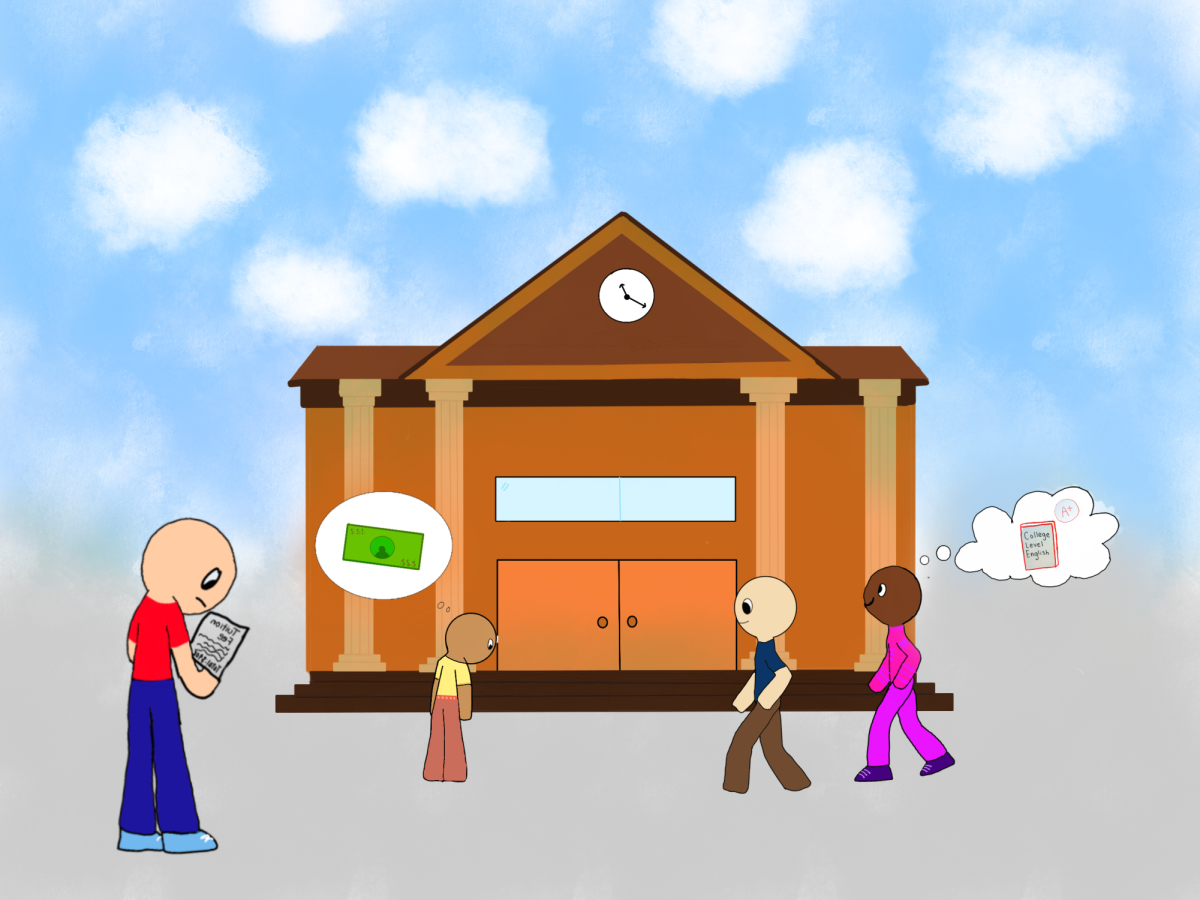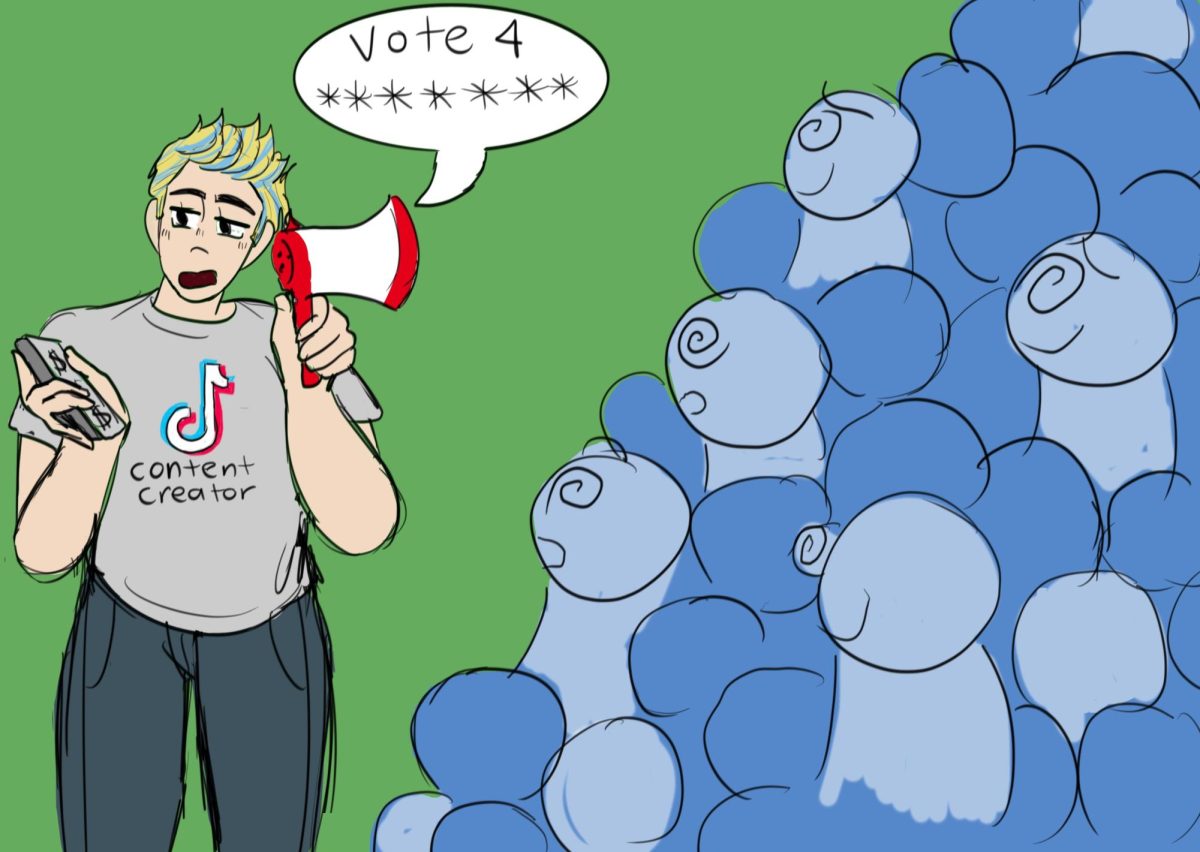Yes.
There have been ongoing debates and discussions regarding the topic of how to address the issue of rising college tuition costs. College tuition has been steadily rising over the past few years and has been a general subject among students in a wide range of communities. Nonetheless, it is necessary for tuition to be raised.
The increase in college tuition costs can be attributed to several major factors that cause more hardships for college faculty members. With state fundings being severely cut, many public universities and colleges have been left out from being funded by state governments, resulting in the decision to make up for those lost funds with higher tuition fees.
According to the article “Why is College So Expensive?” written by Nina Chamlou, a writer for the Affordable College Organization, “state fundings based towards public colleges in the years 2017-18 has severely decreased as it is $6.6 billion below contributions in 2008.” This shows that the state fundings contributing to education has begun a startling decline, therefore the budgets of schools are not reaching the minimum financial level it needs to operate.
This trend continues today and has caused colleges to experience financial shortfalls as state funding serves as a substantial portion of a college’s budget. This has made it a challenge in covering basic operational expenses like salaries and common facility maintenance, resulting in the increase of courses being cut. As colleges face these financial pressures, this results in students are now obligated to pay higher tuition fees.
Facility maintenance being one of the primary expenses may result in a lack of infrastructure improvements because there is not enough money to pay for it. Instead of improving existing infrastructure, some colleges have decided on building newer facilities in order to attract students because it may often be cheaper than continuing maintenance on older buildings. Chamlou adds that “to attract students, colleges have been adding more facilities. This includes new academic buildings, nicer dorms, and more extravagant recreation centers.”
From “It’s Time to Worry About College Enrollment Declines Among Black Students”, another artilce Chamlouwrote, colleges have agreed on creating new facilities in hopes of recovering decaying enrollment rates since “between the 2014-15 and the 2018-19 academic years, annual undergraduate enrollment dropped by 1.25 million students, a 5% decline.” Improving infrastructure is a strategic move for colleges aiming to attract and retain more students. A newer, well-maintained campus can enhance the overall learning experience and contribute to a positive academic environment for all but will decrease overall financial funds.
Not only has this developed an issue with the college infrastructure itself, but also contributes to the problems that faculty members who were employed there need to handle. In the article, Some colleges cost $95,000 per year, and they’re only getting more expensive. Here’s why, written by Nicole Goodkind, a reporter at CNN Business, “higher education is primarily produced by skilled workers – faculty and administrators” leading to their prices in the economy going up. However, inflation exerts pressure on the financial dynamics of colleges, making it more difficult to both allocate funds to hire high quality workers while also making sure their salaries keep up with inflation. Keeping that in mind, the majority of the employees may negotiate for higher wages to maintain their own financial stability. It is crucial for students to invest more money in a higher tuition fee in order for them to obtain a high quality learning experience.
Moreover, according to the article Why is College Tuition Rising so Fast? by Sonya Krakoff, a senior content marketing specialist, “many institutions need to increase tuition to continue operating as they have been” and that “most institutions don’t have the funds available to subsidize tuition for their students to the extent that they have in the past and must pass the cost of a degree along to their students as a result.”With colleges not having enough money to afford the expenses in order to fully operate their education system, it forces them to shut down temporarily or permanently and may merge with other school programs.
Educational institutions have only found temporary solutions. By turning towards an education system consisting of low pay and no benefits to the employees, they are attempting to save money to keep up with stability in funds. Although, with these factors rising up in severity, these situations can only temporarily be avoided, which has led to the topic of raising the costs of college tuition
Addressing the topic of keeping colleges in operation is a complex challenge that requires a multitude of approaches. This includes more public funding and most importantly, the mandatory increase in college tuition costs. This is vital for ensuring that many communities can recover from the effects of inflation, less state funds, and skyrocketing educator costs.
No.
On Sep. 13, the Trustees at California State Universities (CSU), the nation’s largest public university system, voted to raise tuition by six percent for the next five consecutive years in hopes of narrowing a $1.5 billion deficit. As The Associated Press, a nonprofit and nonpartisan organization explains, this is a decision that students call damaging.
The subject of raising tuition has always affected students, but recent years have shown a dramatic increase in the payment of colleges located in California. As young adults suffer the detrimental effects of tuition, colleges and state universities must stop the increase and create a demand for a decrease.
As high school students begin transitioning to college, they must adapt to the rising prices that empty out their wallets. According to the Public Policy Institute of California, a nonprofit and nonpartisan organization, 3.8 million Californians owe over $142 billion of debt to colleges. Even with such a high number, CSU universities plan and choose to raise tuition—leading to a harder transition for younger students.
Moreover, as stated by The Associated Press, an independent global news organization, “annual tuition for full-time California undergraduate students will increase by $342 next year to $6,084.” They expect that by the 2028-2029 school year, “students will be paying $7,682 per year ”, explained.
If annual prices rise, students and minorities will receive the extremely short end of the stick. Minorities in school districts have a smaller percentage in receiving a college degree. As The Hechinger Report explains that 34 percent of Black adults, and 28 percent Hispanic adults receive a degree—which can be compared to 50 percent for the White community.
Through the exponential growth of prices, minorities are being singled out and racially discriminated against in the educational system. Communities have set standards of what minorities can and can’t do. So, this brings up the question on how minority students can succeed in a higher education if most of them are told they won’t; soon they will believe it too.
Furthermore, students in the near future experiencing college, may all together discontinue their education by dropping out due to the economic pressure they are faced with. Everyday, students use their expenses to afford necessities like food and water, but the rise of tuition lingers behind them. Students in California are 46.5 percent more likely to drop out of college due to the detrimental economic impact it has on their lives.
States have been continuously putting less money in higher quality education these past years and have not raised taxes or increased budgets to accommodate the price a student can pay. The reasons for the increased tuition have been to expand administrative staff and improve college campuses.
Clearly, students are paying more for a valuable education even though it is one of the primary responsibilities of states to provide enough economic support to the educational system.
As money is given to new professors, students are experiencing withdrawals from a higher education and looking for moderate careers. If future generations begin to pursue these average careers, communities will create a higher demand for these types of jobs while making careers that need a diploma less common.
Once colleges realize the importance of reasonable tuition, they will benefit financially and socially. As stated by the Public Policy Institute of California, affordable college fees allow “ increase access and lower barriers to completion, which could help close the projected degree gap by 2030” and promote equitable access to and success in college simultaneously.
If tuition decreases, so will the student debt that has accumulated. Educative Data Initiative, an organization that collects data and statistics about the United States educational system, states that “canceling student loan debt may add up to 1.5 million new jobs”. Additionally, when “a consumer’s student debt-to-income ratio increases by 1%, their consumption declines by as much as 3.7%.” Meaning, if student loans are decreased, then job opportunities and resources will be far more accessible to college students.
Raising tuition is unreasonable. If colleges do not have the ability to accommodate students’ needs then students will not participate in the elaborate and complex college system they must be faced with. Tuition needs to be lowered for students to have a successful and prosperous future. If this cannot happen, then state universities cannot blame a failing future on its community.









